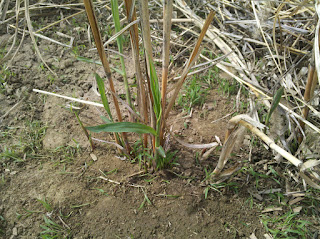 |
| One small 10x10 foot area cleared for rhizome harvest |
 |
| An example of a plant to be harvested. This was done in early spring but this past winter and spring have been very warm compared to normal and some growth has begun. |
 |
| An area dug up |
 |
| The tool used to dig up rhizomes |
 |
| A rhizome pulled from the ground |
 |
| All harvested rhizomes set out from where they were dug from |
 |
| A collection of rhizomes dug up |
 |
| Same group of rhizomes washed off. |






